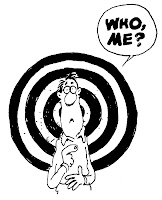Like many of you, even though I don't need assistance to hear my TV, I often turn on closed captioning. Sometimes there's someone in the room who's trying to read or talk on the telephone, or I want to catch all the words to a song being performed by a band on a late night talk show. Whatever the reason, I find closed captioning very useful. I think all shows should be captioned.
For one thing, it's just good business. An advertiser spends tens of thousands of dollars or more on every spot they run. A quick search on the net shows a company that will do it for $15 for a 60 second spot, so adding closed captioning doesn't add much to the cost; but the resulting benefits are many.
Here's one that excites me: Putting captions on your spots can add 10 or even 15 seconds to the amount of time your message is on the air absolutely free! Here's how it works: Next time watch TV with captions on. You'll notice some commercials are captioned while others aren't. When a captioned spot is followed by one that isn't captioned, an interesting phenomenon occurs: The last caption remains on screen through a good chunk of the uncaptioned spot that follows.
Can advertisers use this feature of closed captioning to their advantage? You bet! Instruct your captioning producer to make that last caption contain your brand name, contact info, whatever. Then let it fly. When your spot airs, that final caption can linger long after the spot has ended. And that extra linger time might just give a viewer a chance to write down your phone number or address and get you the sale.
Now imagine this: Suppose your spot is followed by one of your competitors' spots that isn't captioned. While they're going on and on about how great they are, there's your brand name superimposed right over their commercial. How's that for a kick? Talk about guerrilla advertising!
Closed captioning is also the right thing to do. It's a welcome service to those who are hearing-impaired. They'll appreciate it, and it encourages good will towards your brand, again opening the door to more sales.
It can also keep you out of trouble. Recently, there have been several lawsuits initiated against universities (MIT is one of them) that haven't been captioning their on-line courses. The argument goes that without captioning, the courses become inaccessible to the hearing impaired; that's a violation of the Americans with Disabilities Act (ADA). Nobody needs a lawsuit that can be prevented for fifteen bucks.
But without even considering the possibility of lawsuits or the goodwill captioning brings, the added exposure time for your brand makes closed captioning something a smart advertiser shouldn't pass up.
Until next time,
Fred Pagano
Brown Cow Studios creates
"High Quality Video and Sound Design at Terrific Value."
How can we help you? Get in touch with me anytime. Fred@BrownCowStudios.com







